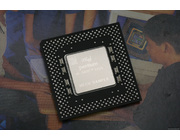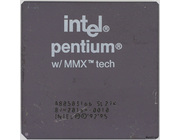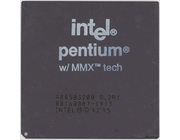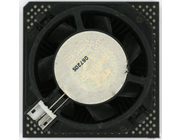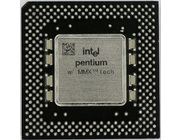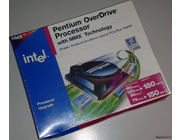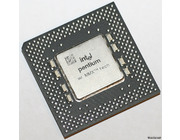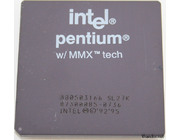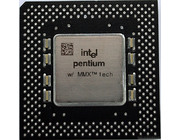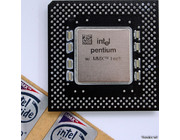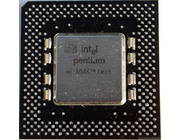A famous evolution of the original Pentium (P5). The Pentium had a good reputation and the new Pentium with MMX Technology was right on spot. It offered a 32KB L1 cache just like the Pentium Overdrive for 486 systems had (normal Pentium's have 16KB L1 cache). The bigger cache and some extra improvements made the processor quite a bit faster. On top of that the processor featured the then new MMX multimedia extensions. Marketing let people believe that 'MMX' was the magic to make this CPU faster, but in reality it was the bigger L1 cache that did the trick. Applications and games that used MMX weren't much available in 1996 and 1997.
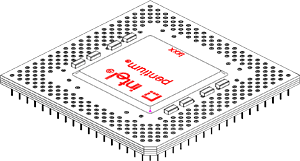 | One of the first games to support MMX was the racing game PoD (Planet of Death). PoD was shipped with an additional executable which would start the MMX version, just like many games had a 3dfx-executable at the time. The MMX version would display the Pentium MMX logo on start-up. If I remember correctly the MMX version would be able to run at 800x600 and the normal version was 'stuck' at 640x480. Most Pentium MMX processors came in a plastic package like the sketch on the left. Ceramic versions, like the original Pentium, also existed but were less common. |
